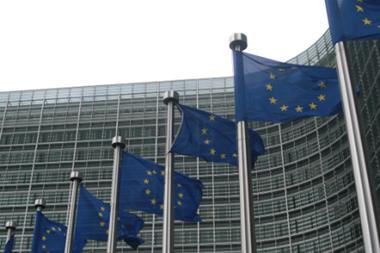Inflation, post-pandemic fallout, geopolitical instability, rocketing energy prices, and an increased focus on ESG has heightened D&O exposures
A near perfect storm of an inflationary economic environment, post-pandemic fallout, geopolitical instability, rocketing energy prices, and an increased focus on the Environmental Social and Governance (ESG) performance of companies has heightened the focus on D&O exposures across Europe.
D&O exposures typically are magnified when economies head into difficult waters; the current recessionary climate across Europe and beyond will give risk managers pause for thought and prompt many to reexamine their D&O coverage.
The European Central Bank recently said that inflation, which is currently at around 8.1%, likely will remain high in the short term, because of soaring energy and food prices and shortages of other goods and materials, among other factors.
Insolvency risk rises
Across Europe, many governments stepped in to support business with measures to enable them to continue to trade during the worst grips of the COVID-19 pandemic. There is now a very real fear that the withdrawal of that support may leave some companies at greater risk of insolvency.
While this did not materialise to a great extent in 2021, statistics from the European Commission showed that insolvencies in the EU increased by 2.2% in the second quarter of 2022 compared with the first quarter of the year.
Germany saw a 26% increase in insolvencies in August compared with the previous year, while France experienced a 35% increase in bankruptcy proceedings in the first quarter, for example.
As the full impact of the pandemic sets in, coupled with other economic stressors, we can expect the real number of these so-called ‘zombie companies’ to become apparent as we head towards the end of the year and beyond.
Class action numbers back up
While the number of US class actions dropped during the pandemic, with a 35% fall in the number of securities class actions filed in 2021 compared with the previous year, that reduction in filings appears to be slowing, with some experts estimating that there will be a total number of 170 filings for 2022; only a 6.6% reduction compared with 2021.
As the recessionary environment worsens, it’s not certain that this number will remain realistic. European companies with exposures in the United States will be mindful of this, and also aware that in Europe there has been a steady increase in collective or class actions in recent years.
In 2021, there were 110 class actions claims filed, according to law firm CMS, representing a 120% growth in the number of such claims between 2018 and 2021.
The Netherlands in particular has become something of a hotspot for collective actions and the UK, which has an opt-out system for collective redress, also has seen a significant increase in the volume of actions filed.
The potential for disgruntled investors or other stakeholders to seek redress tends to increase in times of economic turbulence, so risk managers are acutely aware of the need for these exposures to be managed and, where possible, transferred.
It’s worth bearing in mind that even when cases are successfully defended there are often significant defence costs incurred.
Ukraine ramifications
As well as the tragic loss of life and political instability caused by the conflict in Ukraine, there’s been a knock-on effect on supply chains for many goods and materials, resulting in shortages of some commodities and increased costs for manufacturers.
An acute example of this has been the impact of the conflict on energy supply and prices.
Directors and officers and their risk management teams are watching this situation with caution. The very real risk of energy shortages as Europe heads into the winter months, particularly for those sectors such as the chemical industry that are heavily dependent on energy, may result in increased exposure to shareholder actions.
Shareholders may argue that companies ought to have been better prepared for energy shortages; this is likely to result in a complex claims picture.
Coupled with that risk, the need for some countries and companies operating within them to depend more heavily on fossil fuels to address shortages may mean some face challenges in meeting their ESG commitments – again potentially opening them up to stakeholder dissatisfaction.
The need for companies to address the ESG concerns of their stakeholders remains a priority, even against the backdrop of a shifting economic environment.
The Russia-Ukraine conflict prompted many companies to cease trading in Russia and Belarus, but others have argued that they have a requirement to remain operating there as to stop might mean health and safety exposures for citizens. Again, this is a complex picture.
Changing insurance market dynamics
In recent months, we’ve observed the insurance market for D&O in Europe softening more quickly than many other lines of business. After a period of hardening of both rates and terms and conditions, an influx of new capacity – prompted by the market’s return to more profitable territory – has once again increased competition.
But the loss picture has not significantly improved, and there is a host of potential exposures on the horizon. The reinsurance market has expressed disquiet about a potential lack of discipline in the primary D&O market as some carriers seek to build out market share despite this complex risk picture.
We believe that at all times, but notably in challenging economic circumstances, our clients need a reliable, long-term partner for their D&O risks. Despite the volatile environment, our underwriting appetite for D&O has not wavered in recent years.
We will look to write more primary layers of coverage and reduce our attachment points – where our clients require it – but will not seek to be aggressive on rate; our goal is to be a long term, sustainable partner. Volatility is not helpful for clients.
As we look towards 2023, D&O clients are likely to have a changeable set of concerns. We would urge them to ensure that their risk presentations clearly articulate their dependency on countries involved in geopolitical conflict and their processes and strategies to deal with that, as well as their ESG goals and plans to manage other risks.
None of us knows what new risks might be around the corner, but our aim is to stand by our D&O clients for the long term. Good dialogue and careful planning will help us to do that.
Mathieu Borneuf is senior vice president, Professional Lines, Continental Europe, Sompo International London Market/Europe Insurance




















No comments yet